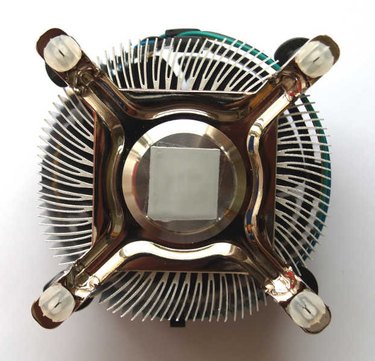
Intel makes many processors designed for different computers and functions. From power-saving processors for netbooks to high-end, multiple-core 64-bit processors, understanding the differences in the processors is key to selecting the right one for your computing purposes.
Atom
Video of the Day
Intel Atom processors are low-power-consumption processors designed for use in netbooks and other networked-based computing devices where battery life and power consumption are more important than processing power. There are several types of Atom processor. Processors without a letter designator before the number are meant for general low-power devices. Processors with a N designator are designed for netbooks. Atom processors designed for mobile Internet devices have a Z designator. The number following the designator indicates the level of processor. Higher numbers indicate more processor features.
Video of the Day
Celeron
Celeron processors are designed for lower-end desktop computers that are primarily used for web activities and basic computing. Celeron processors have a numerical indicator. The higher the number, the more features on the processor. There are different classes of Celeron processors, including lower-power consumption processors designed for laptop computers.
Pentium
Pentium has been used as a name for a number of different generations of processors. Current generation Pentium processors are energy-efficient dual core processors designed for desktop computers. Pentium processors have numeric designators that, like other Intel processors, indicate higher levels of features with higher-series numbers.
Core
There are two types of Core processors. The original Core processor is called the i7. The number following the i7 on the CPU indicates the number of CPU features. A higher number indicates more features, like cache, clock speed, front side bus or other technologies. Core 2 Duo processors are multiple-core processors. They have a number of letter indicators that indicate different processor families: QX indicates a high-performance quad core CPU, X indicates a high-performance dual-core CPU, Q indicates a quad-core desktop CPU, E indicates an energy-efficient dual core CPU, T indicates an energy-efficient mobile CPU, P indicates a low-power mobile CPU with lower-power consumption than the T, L indicates a very low-power consumption mobile CPU, U indicates the lowest-power consumption Core 2 processor made by Intel, and S indicates a small-form factor CPU package. These alphabetic indicators are followed by a number. Higher numbers indicate more CPU features.
Xeon and Itanium
Intel Xeon and Itanium processors are server class CPUs designed and optimized for various server applications. These processors have three letter indicators: X indicates a high-performance CPU, E indicates a rack-optimized CPU, and L indicates a power-optimized CPU. There are three levels of Xeon processors. The 3000 series processors contain a single core, 5000 series processors contain two cores, and 7000 series processors contain more than two cores. The 9000 series processors indicate Itanium class processors, which can have two or more cores. Higher numbers in each series indicate more processor features.